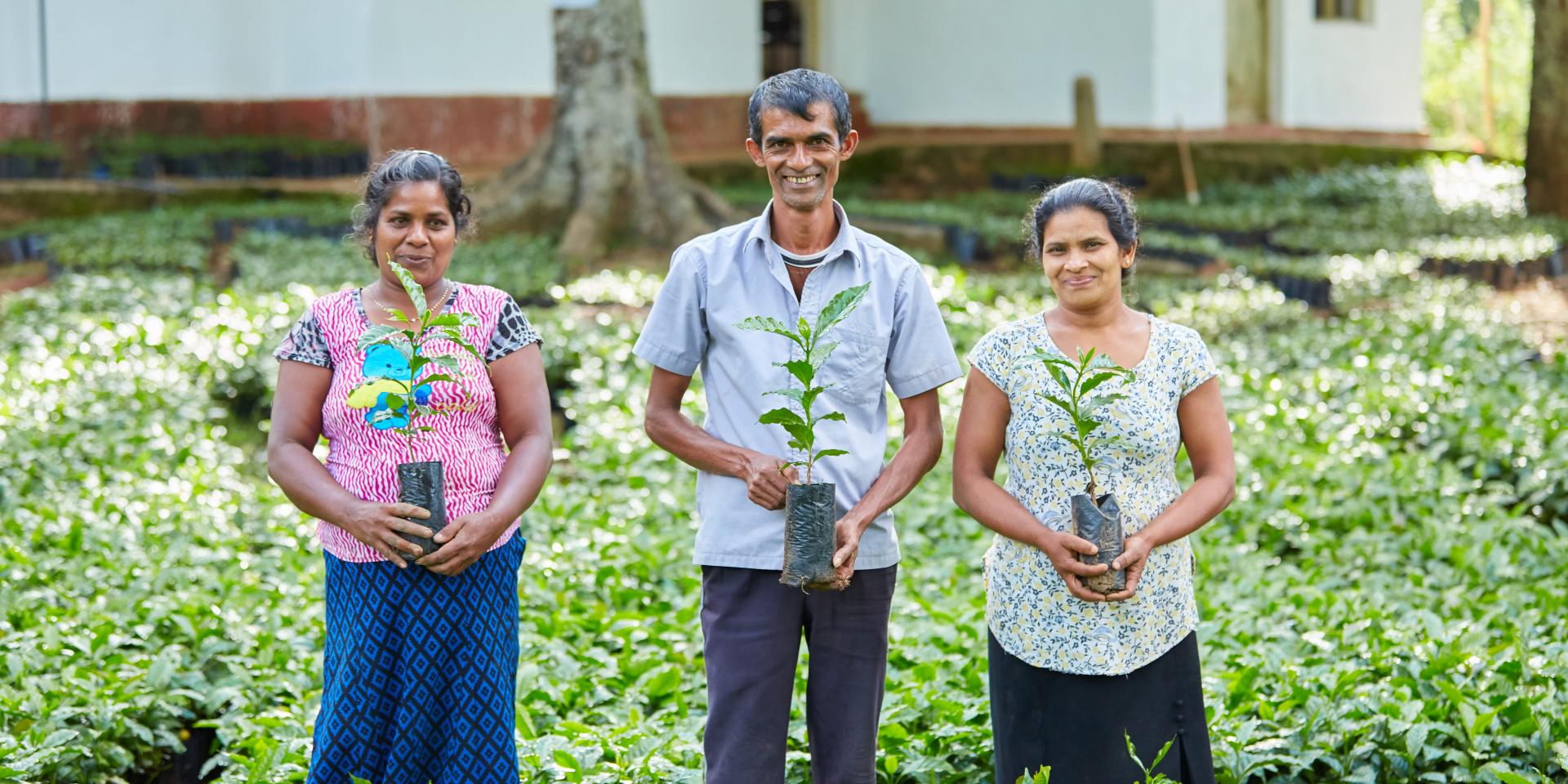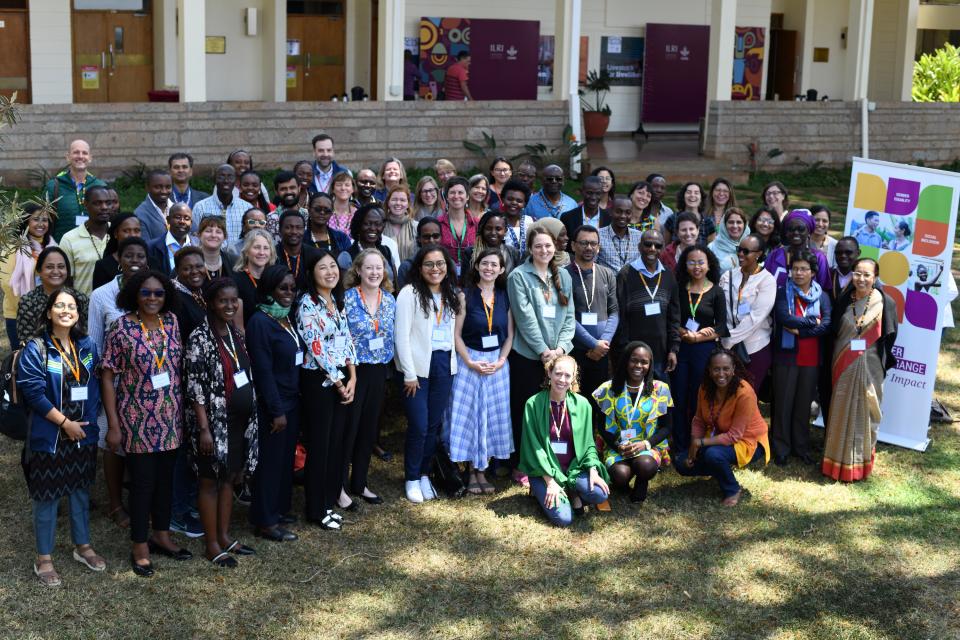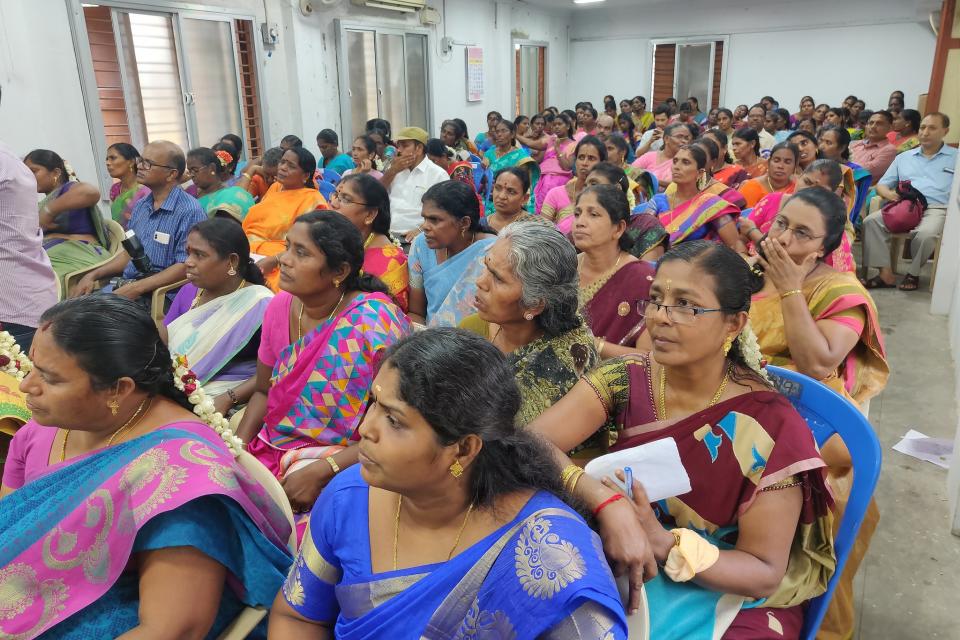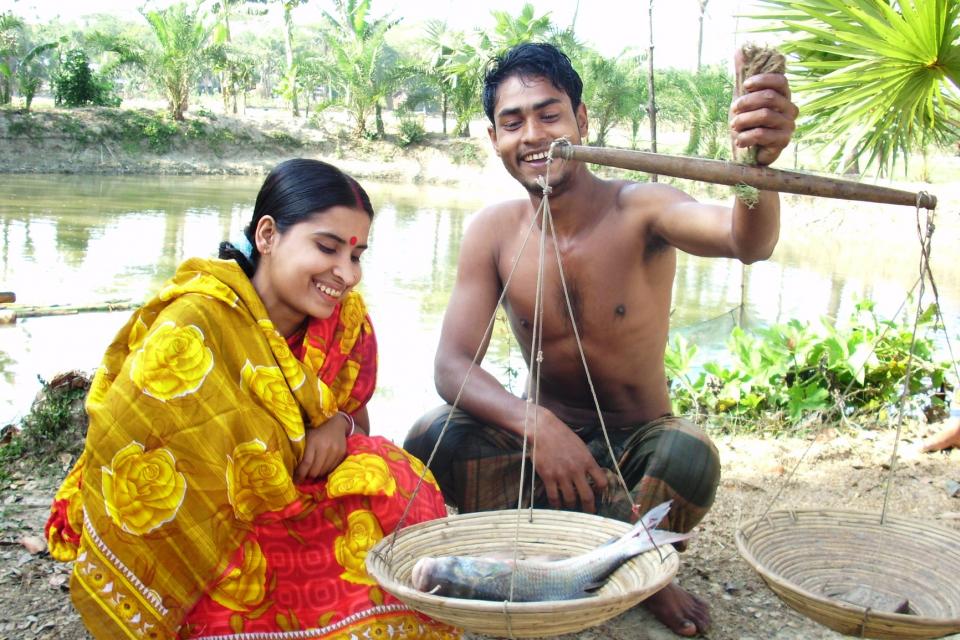How climate change adaptation projects can advance gender equality and progress toward SDG 5
 Photo: UNDP Sri Lanka
Photo: UNDP Sri Lanka
Key Messages
- Existing societal dynamics, including women’s lack of access to technology and their increasing labor burden due to forced migration, are some of the key reasons behind gender inequality in climate change adaptation projects.
- Embedding gender considerations and facilitating women’s participation in design and implementation of climate adaptation projects—along with inclusive policies, training, information access, planning and monitoring—is a must to avoid gender inequality.
- Evidence is clear: conscious efforts are essential to integrate local, Indigenous, intergenerational knowledge and institutions in existing, otherwise biased, formal scientific and institutional arrangements. Women play important roles in supporting, teaching and adapting traditional knowledge to climate change adaptive actions.
Gender inequality originating from historical, socioeconomic, developmental processes and deeply rooted social norms is a major factor exacerbating vulnerability to climate change impacts across sectors and regions. An important question that arises in this context is whether ongoing adaptation projects, implemented to reduce climate risks and existing vulnerabilities, are widening or resolving this historical burden of gender inequality.
We, along with a large number of committed colleagues (among them Dr. Anjal Parkash), reviewed 17,000+ global studies across nine major systems and sectors, and synthesized evidence on positive and negative impacts of climate adaptation projects on gender equality.
First, we found that there is a lack of targeted action for enhancing gender equality. In all these nine major systems and sectors, both positive and negative impacts on gender equality are being created. Therefore, it is important to understand the context in which climate change adaptation actions have negative impacts on gender equality and to design policies around such negative impacts so as not to exacerbate them further.
Second, our literature review presents a methodology to assess the net impact—that is, net impact of positive and negative impacts. We found that in four systems and sectors, such net impacts are negative. This is the case within
- Ocean and coastal ecosystems
- Mountain ecosystems
- Moverty, livelihoods and sustainable development
- Industrial system transition
Evidence explaining negative impacts
Our literature review summarizes the evidence, here grouped in three broad categories, that explains the reasons why climate change adaptation projects have net negative impacts on gender equality within the four systems listed above:
1) Existing societal dynamics disempower women: Evidence shows that when implementing climate adaptation projects, the role of gender intersects with caste, age and wealth, leading to priorities and power differences that disempower women. For example, in rural savannah areas of Northern Ghana, sociocultural norms prevent women, particularly married women, from migrating (as an adaptation strategy). Continuing patriarchal institutions and structural barriers result in women having less control over income, fewer productive assets, including irrigation, lack of property rights as well as less access to credit, climate information and seeds. This reduces adaptation options for women in farm-related activities. Unanticipated events and actions can also have adverse impacts on women. For example, women are paid lower wages than men in off-farm adaptive action projects. Literature also points out that if a crop fails due to climate events, women are forced to sell their personal assets to cope with the household level loss.
2) Social exclusion prevents women from accessing technology: New technologies and information systems are adopted differently by women and men, largely due to differential, gendered access and control over household assets. For example, the literature showed that women felt less empowered to use irrigation assets in agriculture when ownership is controlled by men. Inaccessibility to mobile phone ownership and formal knowledge and information systems, including early warning systems, increases women’s exposure to risk, and adversely impacts their capacity to respond to climate impacts. Extension services are usually directed towards men. For example, in Papua New Guinea, the long tradition of providing agricultural training to promote technology transfer and the production of cash crops has often excluded women because of their family responsibilities and daily work and because cash crops are typically controlled by men.
3) Forced migration inflict labor burdens on women: Fisherwomen in the Chilika lagoon of India experienced encroachment and privatization of lagoon land due to the in-migration of aquaculturalists, which resulted in loss of fisherwomen's livelihoods. They were forced to out-migrate for wage labor, which is not equitable for all women due to caste, class and cultural constraints affecting their adaptive capacity. Such out-migration results in loss of traditions, skills, community, customs and identity. While men’s out-migration is considered as an adaptation option, it is not always beneficial to the family, especially to women, as it increases burdens of household work along with agricultural activities due to the absence of their men counterparts, as observed in for example, Ha Tinh and Thai Binh provinces in Vietnam.
How can future climate adaptation projects avoid exacerbating gender inequality?
Our analysis confirms that current adaptation projects aiming to reduce exposure, risks and vulnerabilities to climate change do not automatically enhance gender equality. Without an explicit focus on gender equality and transformative change at project formulation, design, implementation and monitoring stages, adaptation projects run the risk of reproducing existing gender disparities.
We identified the following five key features that would enable future climate change adaptation projects to contribute to gender equality:
- Addressing structural inequities in policies, regulations and programs.
- Enhancing active participation of women and marginalized groups, including low-income, Indigenous people and other groups that experience discrimination in adaptation programs.
- Designing inclusive decision-making processes to actively engage women and marginalized groups.
- Enhancing access to training, information, technology and resources for (new) adaptation projects; access to improved water supply, sanitation and hygiene infrastructure; and access to climate insurance products.
- Revisiting legislation for regulating welfare measures targeting women in the labor force, such as working conditions and wage structure.
Gaps in evidence and future research priorities
- Lack of literature/evidence on impact of climate change adaptation projects on gender equality for sectors/systems, such as the industrial system.
- Sectoral climate change adaptation actions need the engagement of local bodies and communities with strong vertical links to national institutions supported by international cooperation to scale up success stories. In achieving this, some adaptation options will require further research to understand local specificities and social norms as well as their implications.
- Continuously monitoring, developing, and updating the database included in our paper provide real-time information for course correction would be important.
Suggested citation:
Some, S. and Roy, J. 2022. How climate change adaptation projects can advance gender equality and progress toward SDG 5. Nairobi, Kenya: CGIAR GENDER Impact Platform. https://hdl.handle.net/10568/125185
References
Synergies and trade-offs between climate change adaptation options and gender equality: a review of the global literature
Roy, J., Prakash, A., Some, S. et al. Synergies and trade-offs between climate change adaptation options and gender equality: a review of the global literature. Humanit Soc Sci Commun 9, 251 (2022). https://doi.org/10.1057/s41599-022-01266-6
Climate Resilient Development Pathways
Schipper, E.L.F., A. Revi, B.L. Preston, E.R. Carr, S.H. Eriksen, L.R. Fernandez-Carril, B.C. Glavovic, N.J.M. Hilmi, D. Ley, R. Mukerji, M.S. Muylaert de Araujo, R. Perez, S.K. Rose, and P.K. Singh, 2022: Climate Resilient Development Pathways. In: Climate Change 2022: Impacts, Adaptation and Vulnerability. Contribution of Working Group II to the Sixth Assessment Report of the Intergovernmental Panel on Climate Change [H.-O. Pörtner, D.C. Roberts, M. Tignor, E.S. Poloczanska, K. Mintenbeck, A. Alegría, M. Craig, S. Langsdorf, S. Löschke, V. Möller, A. Okem, B. Rama (eds.)]. Cambridge University Press, Cambridge, UK and New York, NY, USA, pp. 2655–2807, doi:10.1017/9781009325844.027.
Climate Adaptation Interventions in Coastal Areas: A Rapid Review of Social and Gender Dimensions
Anjal Prakash, A., McGlade, K., Koll Roxy, M., Roy, J., Some, S. and Rao, N. 2022. Climate Adaptation Interventions in Coastal Areas: A Rapid Review of Social and Gender Dimensions.
A qualitative comparative analysis of women’s agency and adaptive capacity in climate change hotspots in Asia and Africa
In the shadows of the Himalayan mountains: Persistent gender and social exclusion in development
Resurrección, B.P. et al. (2019). In the Shadows of the Himalayan Mountains: Persistent Gender and Social Exclusion in Development. In: Wester, P., Mishra, A., Mukherji, A., Shrestha, A. (eds) The Hindu Kush Himalaya Assessment. Springer, Cham. https://doi.org/10.1007/978-3-319-92288-1_14


